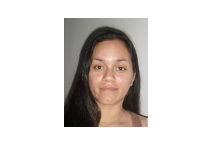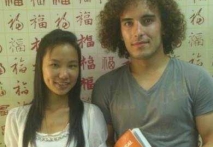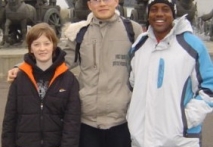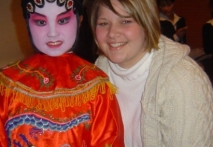学习心得
语风汉语学生Jennifer
学习心得
语风汉语学生Jennifer
我叫Jennifer,我非常喜欢在语风汉语无锡校学习汉语,这是一个非常好的学...
语风汉语无锡校 Zack
学习心得
语风汉语无锡校 Zack
我叫Zack,我是法国人,无锡语风汉教中心是一个学习中国文化和对外汉语的好...
语风汉语学生Kevin
学习心得
语风汉语学生Kevin
语风汉语是一个最理想的学习汉语和中国文化的好地方,学校给我们提供了很多...
语风汉语学生Florent
学习心得
语风汉语学生Florent
我非常喜欢无锡语风汉语学校,这里真的有最简单的汉语学习方法,我学习汉...
语风汉语学生Brad
学习心得
语风汉语学生Brad
我叫Brad,我是澳大利亚人,我再语风汉语学校学习汉语。我现在可以独立和我的...
语风汉语我的无锡学习汉语之路
学习心得
语风汉语我的无锡学习汉语之路
Cherry Queen 中文名: 钱沫以 &nbs...
无锡语风汉语优秀汉语学生Victoria
学习心得
无锡语风汉语优秀汉语学生Victoria
维多利亚Victoria,来自德国的一位11岁的小女孩 ,现读于语...
无锡语风汉语外国学生Michael的汉语学习之路
学习心得
无锡语风汉语外国学生Michael的汉语学习之路
Michael 刚刚来我们无锡语风汉语学校不久的美国学...
苏州汉语学生Jude
学习心得
苏州汉语学生Jude
我叫Jude,在苏州语风汉语学校学习汉语,我也在无锡语风汉语学校学习过很长时间...
无锡语风汉语学校Jessie
学习心得
无锡语风汉语学校Jessie
我学习汉语已经八年了,我能听明白别人说汉语,但是我自己说汉语却觉得说...
汉语 加官方
关注了解更多对外汉语资讯

0510-81151808
1866 1199 988
Sandy.Swun
519988808
无锡新区长江一号 茂业
深茂商务中心8号楼405室
无锡语风学校
语风汉语教学中心
无锡语风国际教育交流中心
Wuxi Mandarin Education School
Top 10 Famous Hutongs in Beijing

Crisscrossing hutongs and old courtyards form the living places of the natives in Beijing. Many folk activities still remain there.
In central Beijing, there are two main areas for the ancient small alleys - one is the Shichahai and Bell / Drum Towers Area not far to the north of the Forbidden City, and the other is the Qianmen and Dashilar Area to the south of the Tiananmen Square.
South Gong and Drum Lane (Nanluogu Xiang)
This old lane is renowned for its long history, culture, specialty stores, and distinctive foods. It is 2,582 feet (787 meters) long and 26 feet (8 meters) wide, with its north end joining East Drum Tower Street, and the south end connecting East Di'anmen Street. This alley is also called Centipede Street because of the eight alleys symmetrically arranged on the two sides of the major lane.
Skewed Tobacco Pouch Street (Yandai Xiejie)
It measures 761 feet (232 meters) long, connecting Di'anmen Outer Street at the east end and the junction of Xiaoshibei and Ya'er Hutongs at the west end. The slender street is like a pipe's stem, stretching from northeast to southwest, and its east end looks like the pipe's mouth. Besides, there used to be a bunch of pipe shops in late Qing Dynasty (1644 – 1911). So, people called this street Skewed Tobacco Pouch. Today, many different kinds of bars, tea houses, coffee rooms and souvenir shops have mushroomed on the street.
Mao'er Hutong
It is in the northwest of Dongcheng District, stretching 1,919 feet (585 meters) from South Gong and Drum Lane to Di'anmen Outer Street. A lot of celebrities have lived there, such as Wan Rong - the last empress, Feng Guozhang - a leader of the Northern Warlords (1912-1926), and Hong Chengchou - a general in the Ming Dynasty (1368 –1644). Many of their former residences remain there.
Guozijian Street
Guozijian Street is to the west of Yonghe Temple, with its east end joining Yonghe Lamasery Street while the west end adjoins Andingmen Inner Street. The street is 2,195 feet (669 meters) in length and 36 feet (11 meters) in width. It is the only old alley in Beijing that still has traditional arches. Guozijian Street is renowned for its old-time Beijing layout and architectures, authentic native lifestyle, Temple of Confucius and Imperial Academy (Guozijian).
Liulichang Cultural Street (Colored Glaze Factory Culture Street)
This alley has a long history, located outside Heping Gate. Early in the Liao Dynasty (916 - 1125), it was a village called 'Haiwang'. Then, a colored glaze factory was set up there and thus the name of the alley. Later, it became an antique market. Nowadays, nearly 100 time-honored brands are still there, such as Rongbao Zhai - containing precious calligraphy and paintings, Yungu Zhai - housing quaint enamels and porcelains, and Yuehai Xuan - selling traditional musical instruments.
Jinyu Hutong (Goldfish Hutong)
With its east end joining North Dongdan Street while the west end adjoins Wangfujing Street, it measures 1,860 feet (567 meters) long. It is wider than other alleys in Beijing and houses the famous Jixiang Theater, Peninsular Hotel, and Novotel Peace Hotel.
Dongjiaomin Lane (Dongjiaomin Xiang)
Together with Xijiaomin Lane, they are called the longest hutong in Beijing, with a length of 9,843 feet (3 kilometers). Stretching from East Tiananmen Square Road to Chongwenmen Inner Street, Dongjiaomin Lane used to be the location of many foreign embassies. There are also sites of old churches, banks, official mansions and clubs. Buildings there form the only European style block in Beijing, which contains the early 20th-century features.
Xijiaomin Lane (Xijiaomin Xiang)
It is an east-west alley starting from West Tiananmen Square Road to North Xinhua Street, measuring 3,543 feet (1.08 km) in length. More than ten banks were set on this alley from late Qing Dynasty to late 20th century, making it the 'Financial Street of old Beijing'. There are many sites of old banks, such as Central Bank, Continental Bank, and Commercial Guarantee Bank of Beiyang Government.
Ju'er Hutong
With a length of 1,437 feet (438 meters), it starts from Jiaodaokou South Street in the east and ends at South Gong and Drum Lane in the west. It houses the former residence of Rong Lu, a minister in the late Qing Dynasty, including his mansion, ancestral hall, and garden.
Bada Hutong (Eight Great Hutongs)
Once the synonym for the red-light district in old Beijing, it refers to an area to the west of Guanyin Temple and near Dashilar Street outside Qianmen Gate. This area features eight alleys from west to east named Baishun, Yanzhi, Hanjia, Shaanxi, Stone (Shitou), Zongshu Xiejie, Zhujia, and Xiaoli.










